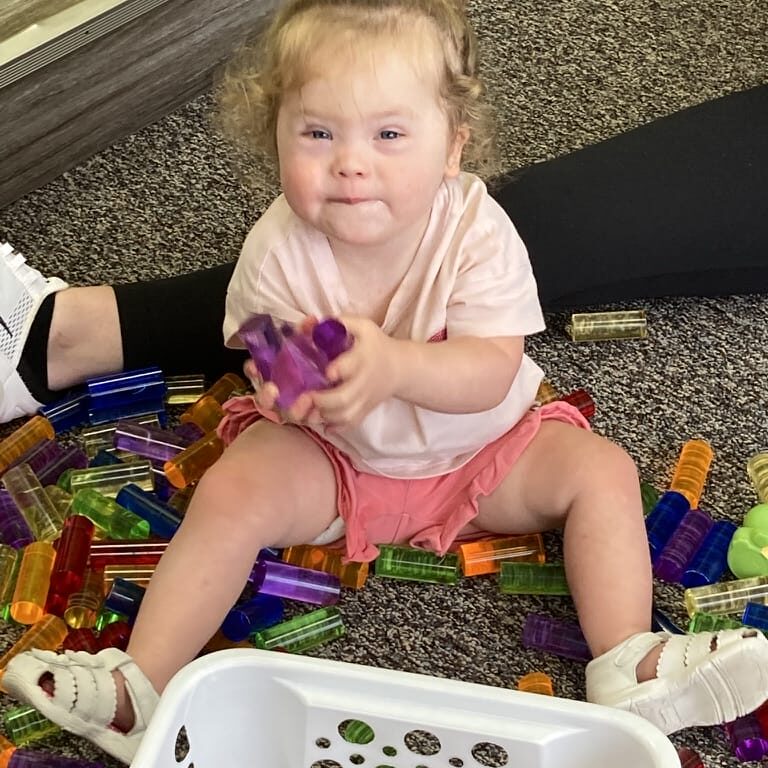Shifting Perception of Challenging Behavior
At GiGi’s Playhouse we approach challenging behaviors with compassion, curiosity, kindness and a desire to problem solve to find and teach more appropriate replacement behaviors.
Here is a summary of all the AMAZING strategies our experienced network peers shared during a breakout session called Shifting Perception of Challenging Behavior. We focused on three scenarios where we may see challenging behavior. THANK YOU to everyone who attended and contributed to make this list so comprehensive! I wanted to share them with you today since they are “strategies you can implement on Monday”.
Participant not wanting to Participate
- Get to know the participant
- Learn their background and information from them or their parents
- Incorporate interests to motivate and encourage participation
- Ignore the pouting if you know it will work for that participant
- Are they too tired, hungry, or has something else personal happen? These things will need to be addressed before learning can occur.
- Scaffold the expectations
- Meet them where they are at
- Be Patient – ease them in
- Allow them to observe first
- Give them a chance to participate off to the side of the group
- Work somewhere else
- Provide safe space for them to be until they are ready
- Eventually they will join the group
- Use Visuals
- Provide social story ahead of time so they know what to expect
- Use Visual Schedules to walk through the activities for the day
- Encourage them to attend to the visual schedule by adding some interaction – Velcro, crossing off, putting a dot on, etc
- First/Then visuals
- Use a visual page to create opportunities for the participant to make some CHOICES by pointing to what they want
- Change the environment
- Is the space too bright, too busy, too crowded?
- Set out activities for them to explore on their own as they get acclimated to the program
- Encourage connections – relationships are so important in learning
- Engage peers/volunteers to help make connections
- Label and validate the emotions – OK to feel shy
- Let volunteers know extra time may be needed and is perfectly fine
- Make them feel special, valued, empowered to make choices
- Shift language – “Are you up for the challenge?” or “let’s go play” instead of “let’s get to work.”
- Embed movement and sensory
- Movement and Sensory should be part of the plan – not used as rewards
- Start with a physical activity to encourage regulation
- Parents
- Make sure parents don’t feel judged, make sure they know they are welcome no matter what
- Offer parent a quiet room, cup of coffee/tea/support
- Step in if parents are struggling to get their participant to join in, allow them to take a break
Transitions within Programs
- Routine
- Create and follow a routine for each program
- Start and end the program with the same routine each time
- Visuals
- Use visual schedule with moveable pieces
- Visual timer
- First/Then charts
- Reward charts
- Use visuals to support choices
- Plan Transition tasks
- Give quiet, independent activity to those who finish early
- Announce a count down
- Explain what is next
- Assign jobs for those who need them during a transition
- If a participant knows how but is refusing, can possibly re-engage by asking them to demonstrate for the others
- Validate feelings – sometimes hard to be finished, I understand how much you like this activity
- If not quite ready to move on:
- Let them know it’s OK if not quite done
- They can take it and finish later
- May be OK to keep working on it, join in the next activity when you can
- Let them hold the book or instrument a little longer
- Sing songs during transition – be sure these are age appropriate
- Hype up the next activity – high energy, this next this is going to be more fun than the last!
- Parents
- Tell parents and volunteers what to do and what is OK during the transition times so they can help guide the participants through the transition tasks.
- They still leave the area
- Go with them, see what they want to do, do it once and bring them back
- Follow their lead and bring back appropriately and playfully
Inappropriate Use of Communication among adults and Teens
- Know your participants
- Relationships are important
- Treat teens and adults as teens and adults – respect and age appropriate
- Redirect conversations to more appropriate topics
- Help break rumination, change the topic
- Ignore inappropriate phrases, noises and that usually makes it stop
- When topic is too powerful like grief, you may need to stop and discuss before you can move on
- Teach how to reframe phrasings
- Would you say that to your best friend or your mom?
- Teach replacement behavior – “This is a great way to say that.”
- At GiGi’s we are Generation G – let’s focus on using kind, accepting and generous words
- Not everything you think needs to be said. If it is not nice, maybe don’t say it all.
- Teach adults and teens to advocate for themselves
- Set boundaries
- Empower them to advocate for right/wrong
- Model and encourage behaviors/communication you want to see
- Give attention to those who are following the rules, they often get the least amount of attention, so intentionally seek to give them positive attention
- Others may see this positive attention and want to engage in these behaviors as well
You can find these strategies in a printable view here:
Shifting Perception of Challenging Behavior Strategies from Network.docx

Recent Posts



